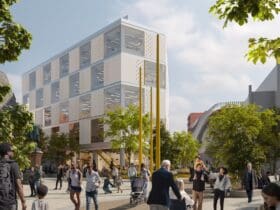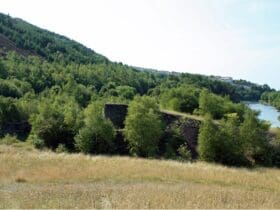An historic treasure of Swansea’s industrial past has a new lease of life – thanks to a Swiss artist.
Zurich-born Andreas Rüthi has produced new works inspired by items from early 19th Century Swansea china.
The renowned tableware, with brightly coloured designs, enjoyed its heyday under business owner Lewis Weston Dillwyn. In 1810 he took sole ownership of a business founded as The Cambrian Pottery in the 1760s.
Now Rüthi, age 62, is exhibiting some of his Swansea-inspired paintings at the city’s Glynn Vivian Art Gallery.


He said: “I enjoyed a residency at the gallery in 2017 and, with it, access to its library, archive, restoration department and porcelain collection.
“Original plates from Swansea and Nantgarw, near Cardiff, were a real inspiration for me as I worked toward a series of large-scale paintings that defined my stay.”
His exhibition – Paper Plates and Poisoned Porcelain – now on show at the Glynn Vivian displays for the first time these large paintings. It also includes smaller sketches and some older still-life paintings by Rüthi, together with six paintings he specially selected from the gallery collection.


Robert Francis-Davies, the council’s cabinet member for investment, regeneration and tourism, said: “Swansea has a great industrial history – and our potters have a distinctive role in that.
“It’s good to see that the spirit of Swansea china lives on through the work of an international artist of Andreas Rüthi’s calibre.”
After training and working as a teacher in Switzerland, Rüthi studied fine art in London and Amsterdam.
He worked in London for several years in publishing as a translator and art director. From 2008-2017 he was a senior lecturer in fine art at the University of South Wales.
Since 1996 his work has been exhibited in the UK and internationally.
Exhibition Andreas Rüthi: Paper Plates & Poisoned Porcelain, Glynn Vivian Art Gallery, Swansea, until March 31, free entry.







Leave a Reply
View Comments